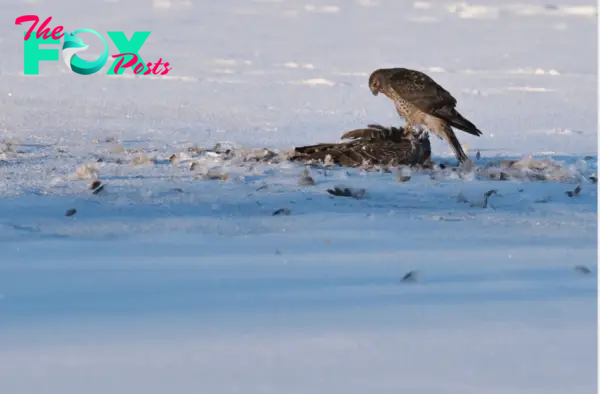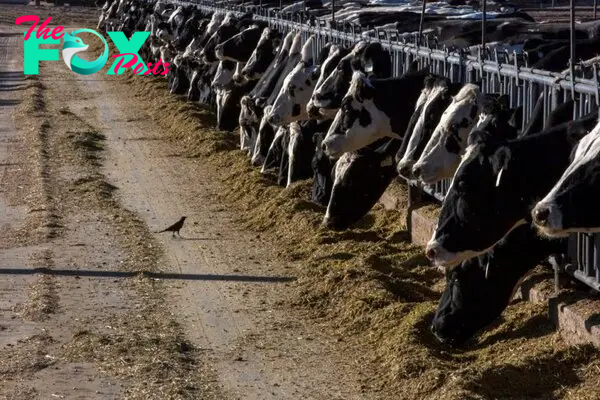Health
Bird flu has reached Colorado dairy cattle. Now what?
Colorado is investigating a second possible outbreak of bird flu in a dairy herd, the state veterinarian said this week.
The potential new outbreak — coming less than a week after Colorado identified its first outbreak — is an indicator of how rapidly health officials are trying to catch up to bird flu’s spread through dairy cattle.
Dr. Maggie Baldwin, who manages the Colorado Department of Agriculture’s Animal Health Division, did not provide additional details on the dairy or where it is located. She said the state is awaiting test results from the U.S. Department of Agriculture to confirm whether bird flu, also known as highly pathogenic avian influenza, is involved.
“USDA’s confirmatory testing is taking a little bit longer with the load that they’re getting currently for testing,” Baldwin said.
☀️ READ MORE
A Colorado board wants to lower prescription drug costs. Why are so many patients opposed?
U.S. 50 bridge closure is an “immediate 911 deal” for Gunnison Valley Hospital
“Competency dockets” at Colorado courts are linking people with mental illness to community-based services
Nationwide, avian influenza has reached at least 36 dairy herds in nine states, and state and federal officials recently released new testing orders intended to more aggressively track its spread.
But does that make it something you have to worry about (assuming you’re not in the dairy Business or a cow)? We asked Baldwin and others for their thoughts on some common questions.
Wait, why is bird flu in cows?
H5N1 strains of avian influenza virus, such as the one currently circulating, primarily stick to birds, especially waterfowl. Those animals make ideal hosts for the virus because they generally don’t get sick from it and they are also often migratory — meaning they are basically in the virus transport business.
What has made this particular strain of bird flu somewhat unique is its staying power — the virus has been circulating in the United States for at least two years — and its continued ability to find new species to infect.
At The Sun, we have tracked infections as they moved from wild bird populations to commercial poultry farms. Baldwin said Tuesday the state has seen outbreaks at 34 poultry operations in the last two years, resulting in the loss or slaughter of 6.3 million birds.

Infections then started jumping over into mammals, affecting skunks, foxes, mountain lions, bears and others.
In many of these instances, including when nonwaterfowl birds are infected, the virus is extremely lethal. For instance, mass-mortality events of seals and sea lions in South America in recent months have been attributed to highly pathogenic avian influenza. That’s where the “highly pathogenic” part of the name comes from.
But it’s especially unusual to see bird flu in cattle, said Franklyn Garry, a professor at Colorado State University who specializes in livestock management.
“What’s really notable is there are very darn few flu viruses that substantially affect cows,” he said. “So in the cow world, we don’t really worry about flu because it just doesn’t happen much.”
Are dairy cows dying from bird flu?
No, which is good, obviously, but also makes it harder to track.
Flu viruses, as anyone who has ever caught one knows, are generally associated with respiratory illness: coughing, runny nose, etc. But cattle infected by HPAI generally show few respiratory symptoms. Instead, the main symptoms are fever, reduced apPetite, reduced milk production and abnormal milk production — i.e., the milk is thick and discolored.

These symptoms resolve after what Baldwin called “supportive care.”
In sum, the virus in dairy cattle is “low pathogenic,” Garry said. Such mild symptoms mean that it is possible — likely even — that infections are being missed, making it harder to figure out how many cows are actually affected.
How did cows catch the virus to begin with?
This is where the mystery really heats up.
Bird flu was first detected in a dairy herd in the United States in March, in a herd in Texas. Baldwin said that genetic sequencing suggests the virus was introduced into dairy cattle from wild birds.
-

 Health12h ago
Health12h agoThe Surprising Benefits of Talking Out Loud to Yourself
-

 Health14h ago
Health14h agoDoctor’s bills often come with sticker shock for patients − but health insurance could be reinvented to provide costs upfront
-

 Health1d ago
Health1d agoWhat an HPV Diagnosis Really Means
-

 Health1d ago
Health1d agoThere’s an E. Coli Outbreak in Organic Carrots
-

 Health2d ago
Health2d agoCOVID-19’s Surprising Effect on Cancer
-

 Health3d ago
Health3d agoWhat to Know About How Lupus Affects Weight
-

 Health6d ago
Health6d agoPeople Aren’t Sure About Having Kids. She Helps Them Decide
-

 Health6d ago
Health6d agoFYI: People Don’t Like When You Abbreviate Texts



























